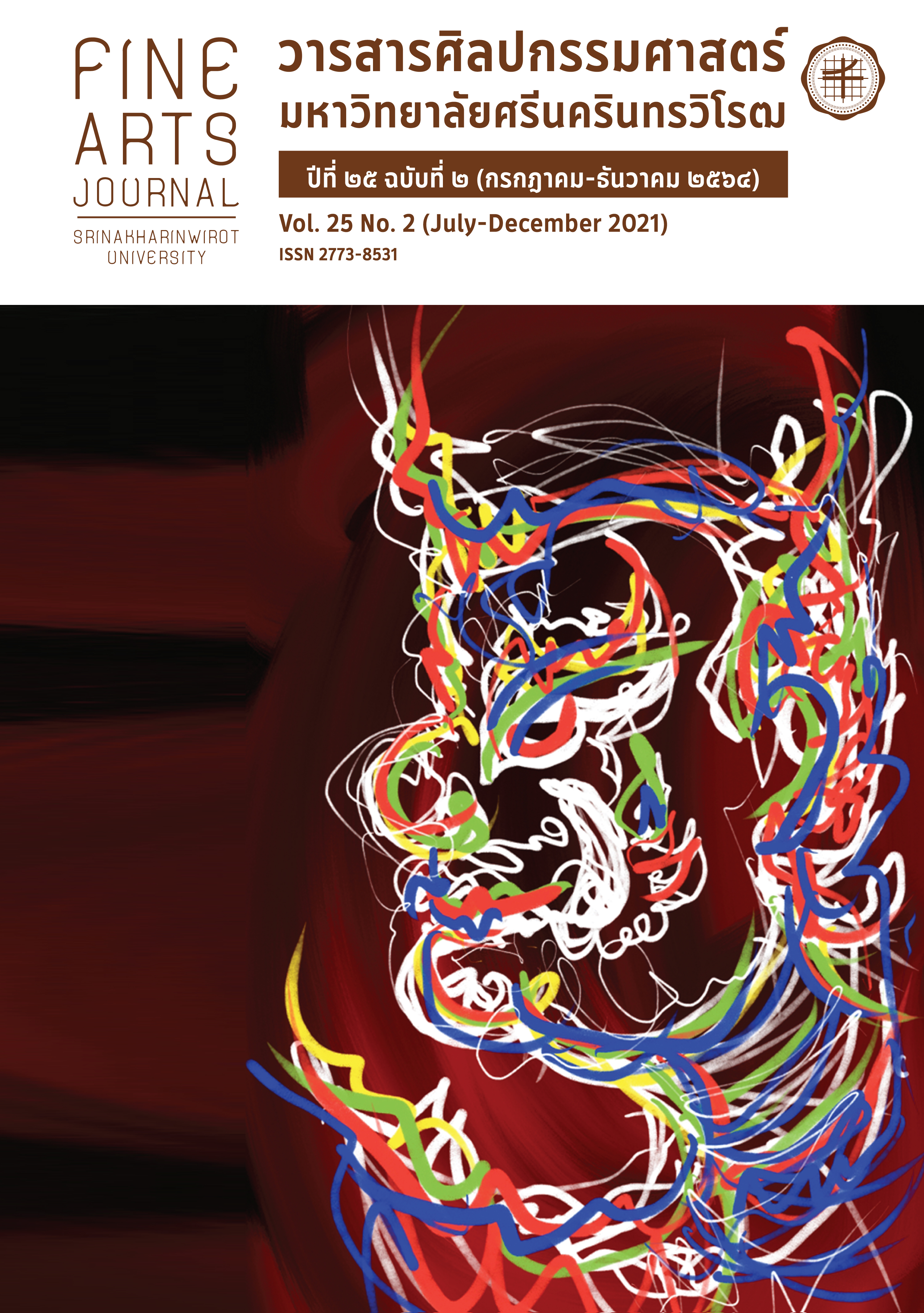PIMAI PIPAT: TRACE OF MUSICAL CULTURE
Keywords:
Pimai, Music culture, Folk piphatAbstract
This anthropology study aims to examine the current cultural conditions and the applications of the six folk piphat ensembles within the Pimai cultural boundary in Nakhon Ratchasima province.
Phinphat is the common name used by the locals in Pimai to address their ensembles. The musical instruments are usually set and stored in a house of an ensemble’s leader. The name of each ensemble is specifically referred to its leader’s name or the village where the ensemble was founded. There are two categories of knowledge transmission: among lineages and between a master and a disciple, both of which occur orally.
Typical instruments found in the ensemble are ranat ek (lead xylophone), ranat thum (lower-pitched xylophone), khaung wong yai (large-gong circle), khaung wong lek (small-gong circle), ta-phon (horizontal double-headed barrel drum), glaung thad (a pair of large barrel drums), ching (small hand cymbal), chaap (wide hand cymbal). Additionally, some ensembles also have a metallic variant of the lead xylophone and pi nai (reed instrument). Two types of ensemble could be formed: khrueang ha (five-piece ensemble) and khrueng paed (eight-piece ensemble). Ranat ek and ranat thum are normally placed in the front row before the gongs. The position of the rhythmic instruments, however, is not fixed. They could be placed either to the right or left of the melodic instruments depending on the performance venue.
The performance techniques of these piphat ensembles are relatively less sophisticated than those ensembles of the central, institutionalized counterparts. Ranat ek plays parallel octaves while khaung wong yai and ranat thum play similar melodies in a slightly different way than the ranat ek. Some melodies are played with both hands either in octave or in the fourth interval, others with one hand after another. Khaung wong lek plays with one hand after another. Ta-pone, glaung thad, ching, regulates the tempo of a musical piece. Ranad ek leads the ensemble, providing musical cues. Musicians are proficient in more than one instrument in the ensemble. Some of the pieces observed during the study are phleng hom rong yen or phleng hom rong glaung, phleng cha, phleng soi son, phleng si nuan, phleng hok bot, phleng sarathi, phleng taurani kan saeng, phleng ok ta-le, phleng khamen pi kaew, phleng nok khamin, phleng mon or khaek mon. These pieces are used for ritual accompaniment. Each piece may be rendered differently according to each ensemble’s stylistic trait.
In terms of its application, the piphat ensembles have played a significant role in the society, despite the increasing presence of other forms of musical performances. The piphat ensembles have been performed in Buddhist rituals, such as ordination, relic ceremony, Buddhist Lent, Thet Mahachat, etc.
The study revealed the connection between music, religions, and belief in Pimai, a district that was once a part of the fallen Khmer Kingdom territory about ten centuries ago. This musical performance illustrates the extant musical practice in conjunction with Buddhism and Hindu-Brahmanism that have flourished since then.
Downloads
References
ปัญญา รุ่งเรือง. (2546). ประวัติการดนตรีไทย. กรุงเทพมหานคร: ไทยวัฒนาพานิช.
พจณิชา ฤกษ์สมุทร. (2562). การศึกษาดนตรีพิธีกรรมวอญย์แฝะ: ดนตรีในพิธีศพพระสงฆ์มอญในประเทศไทย
และประเทศพม่า (วิทยานิพนธ์ปริญญามหาบัณฑิต). มหาวิทยาลัยศรีนครินทรวิโรฒ, กรุงเทพมหานคร.
สุรดิษฐ์ ภาคสุชล. (2563). ปี่พาทย์พื้นบ้าน: กรณีศึกษาวงปี่พาทย์พื้นบ้าน ศ.ดุริยศิลปิน. สักทอง: วารสาร
มนุษยศาสตร์และสังคมศาสตร์, 26(1), 87-96.






